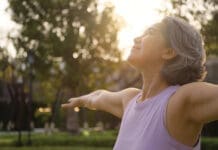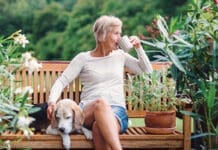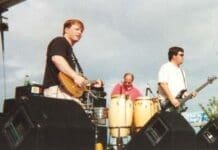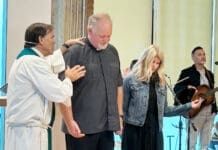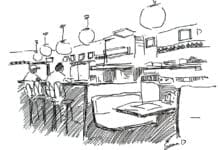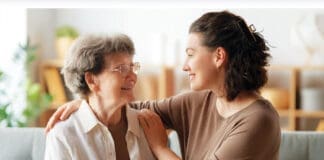Kay Leaman, Health Architect, HealthyDay Healthy

Life Osteoporosis happens when bones become weak and brittle. The most important thing to note that doctors don’t tell you is that we cannot only prevent it, but it can be reversed. In some cases, it may be more difficult reversing it if the remodeling process isn’t functioning.
Did you know that bones are living tissue (living, breathing, functioning cells) that remodel, rejuvenate and recycle continuously? We have the ability to keep them strong and healthy despite the aging process. With this in mind, let’s dive in.
First, the statistics:
- 1 in 2 women after 50 will break a bone
- 1 in 5 men after 50 will break a bone
- 1 in 5 women can break a bone three or more times before being diagnosed
- Women reach peak bone mass between ages 20-35
- 10 million Americans have osteoporosis
- 44 million people have low bone density in over half of adults over 50 globally
- 25% of people with hip fractures end up in long term care. The loss of independence and mobility is often irreversible.
- Osteoporosis and it’ effects are costlier than breast cancer, heart attacks and strokes.
- 39% of the population are deficient in calcium
- 95% of the population are deficient in vitamin D
- Women who strength train can increase spinal bone density by 13% in 6 months (Tufts University).
Bones are made up of osteocytes (bone cells), osteoblasts which build up and form new bone cells continuously, osteogenic cells are stem cells and osteoclasts which kind of reabsorb or break down the bone cells.
Muscles and bones work hand-in-hand. There needs to be a ‘push and pull’ on the bones to ensure the remodeling process actually takes place. Hence, resistance training can help your bones in the remodeling process. Six exercises that aid in strengthening bones are squats, walking, lunges, push-ups, jumping jacks and planks.
After menopause women experience increased bone loss primarily due to the decline in estrogen production. The decline in estrogen increases the risk of developing osteoporosis. As a side note, with men it’s testosterone that declines, and for both men and women it’s progesterone.
Risk factors we can control are sedentary lifestyles, poor calcium and vitamin D intake, smoking, alcohol, certain medications or medical conditions, hormonal imbalances and posture. Posture is critical. If you slouch when you sit or bend slightly when standing or walking, you limit the amount of oxygen coming in. Our bones need oxygen! Practice keeping your shoulder back and down. The ribcage needs to expand for quality oxygen to nourish our bones.
Risk factors we can’t control are age, gender, family history, body frame size and ethnicity.
Calcium rich foods (Eat a variety of foods every week.):
Vegetables: collards, broccoli, spinach, okra, kale, bok choy Beans: white, red, green, chickpeas, lentils
Dairy: cheese, almond milk, yogurt, milkshakes, whole milk
Nuts and Seeds: sunflower, sesame, chia, almonds, hazel, walnuts Fruit: oranges, raisins, dried figs, currants, apricots, kiwi
Other: eggs, tofu, seaweed, sardines, shrimp
Five Holistic Strategies:
Nutrition: Cellular nutrients (antioxidants, core minerals) including calcium, vitamin D, magnesium and vitamin K are important for healthy bones.
Exercise: Weight bearing, resistance, and impact
Hormonal Balance: estrogen, testosterone, DHEA Supplement: We can’t get what we need in food alone
Lifestyle: Diet, sleep, activity
Preventative Measures: Create meal plans incorporating many foods. Incorporate strength training 30 minutes three times per week. Maintain a consistent supplement routine. Get regular health assessments including a bone density test (DEXA).
Lastly, consider a collagen supplement, adequate protein intake (70 grams/day for women), natural hormone therapy, a weighted vest and utilize vibratory training (With whole-body vibration, you stand, sit or lie on a machine with a vibrating platform. As the machine vibrates, it transmits energy to your body, forcing your muscles to contract and relax dozens of times each second. The activity may cause you to feel as if you’re exerting yourself.). You can also purchase a vibration plate that you stand on.
Making too many changes at once can be overwhelming. Start with one to three things and build up from there. Let’s get stronger together.
Here’s to Health!





















